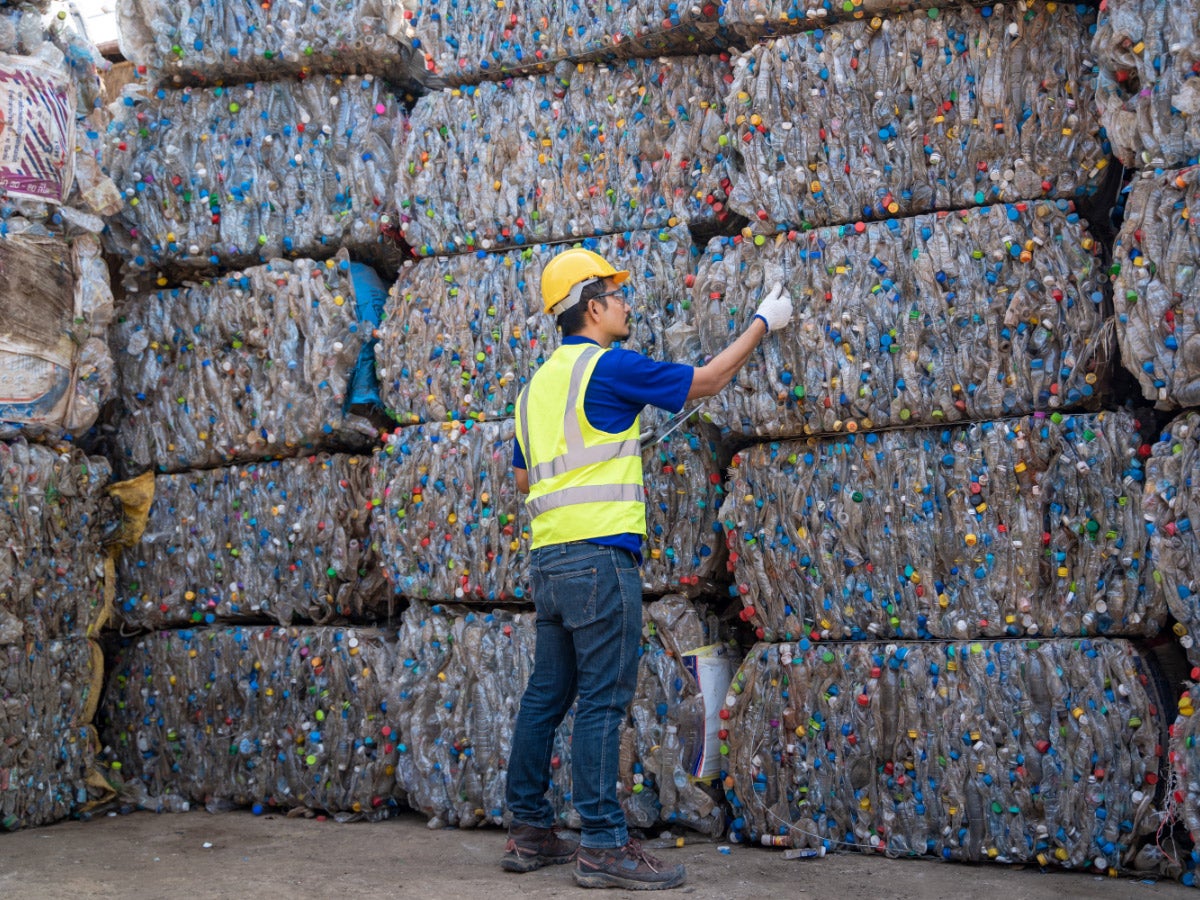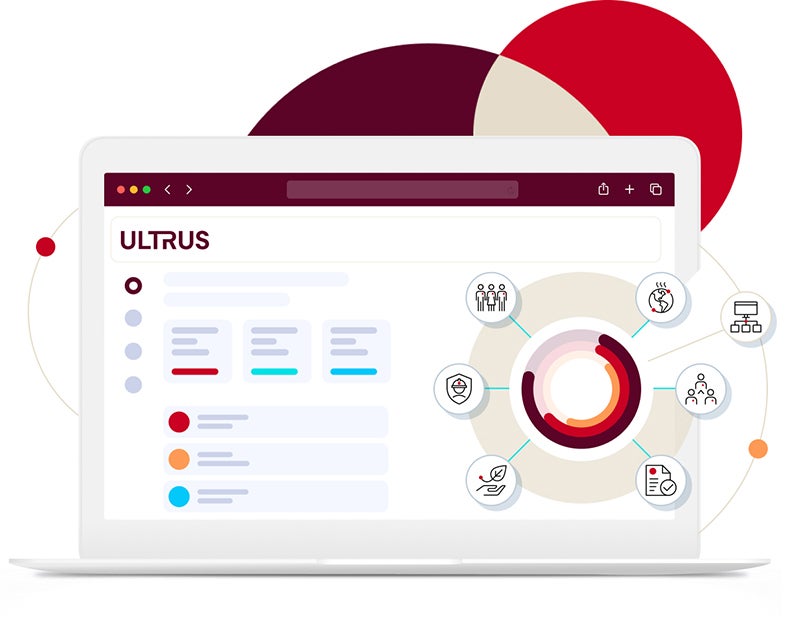
March 25, 2025
Welcome to this quarter's Global Market Access Regulatory Newsletter from UL Solutions. You'll find timely content on new and updated regulations in markets around the world — including Asia, Latin America and the Middle East — plus information about how our software can help you master your compliance needs.
This quarter's Global Market Access Regulatory updates

European Commission Update to Radio Equipment Directive
On Dec. 28, 2024, European Union (EU) Member States applied measures to observe "common charger" provisions of Directive 2014/53/EU (RED). This is in accordance with Directive (EU) 2022/2380 of 2022, which requires radio equipment to be equipped with a USB Type-C receptacle to employ a common charger in between devices.
If capable of wired charging, the categories or classes of radio equipment shall be:
- Equipped with the USB Type-C receptacle
- Capable of being charged with cables in compliance with the standard EN IEC 62680-1-3:2022
The categories or classes of radio equipment listed in Annex 1a, Part I.1 of Directive EU 2022/2380 are now included in the new version of the Radio Equipment Directive 2014/53/EU (RED).
Radio equipment affected by the provisions of the common charger:
- Handheld mobile phones
- Tablets
- Digital cameras
- Headphones
- Headsets
- Handheld videogame consoles
- Portable speakers
- e-Readers
- Keyboards
- Mice
- Portable navigation systems
- Earbuds
Singapore Issues Circular on R32 and R290 in PACs
On Jan. 13, 2025, the Singapore Civil Defence Force (SCDF) published a circular on the safe use of R32 and R290 refrigerants in portable air conditioners (PAC) in Singapore.
Starting on April 1, 2025, suppliers of PACs are required to comply with the National Environment Agency’s (NEA’s) Energy Conservation Act (ECA) requirements. To date, only the R32 and R290 refrigerants meet these requirements and the latest minimum energy efficiency standards. However, the SCDF disallows the use of these refrigerants in PACs due to their flammability properties.
After consultation with the NEA and the PAC industry, the SCDF now supports the use of R32 and R290 in PACs subject to compliance with the SCDF’s safety requirements. Any person who wishes to supply PACs using R32 or R290 is required to seek SCDF approval before registering the products under the ECA.
Manufacturers of PACs must also ensure that their equipment complies with the latest applicable IEC standards (e.g., IEC 60335-2-40), ISO standards (e.g., ISO 5149-1) or equivalent established standards (e.g., UL 60335-2-40, the Standard for Household and Similar Electrical Appliances — Safety — Part 2-40: Particular Requirements for Electrical Heat Pumps, Air-Conditioners and Dehumidifiers) for air-conditioning systems. The equipment must also be regulated by Enterprise Singapore under the Consumer Protection (Consumer Goods Safety Requirements) Regulations (CGSR).
This circular takes effect immediately.


UK OPSS Updates Statutory Guidance on Radio Equipment
On Dec. 19, 2024, the Office for Product Safety and Standards (OPSS) of the United Kingdom (U.K.) released updates on the following Statutory Guidance:
- Radio Equipment Regulations 2017: Great Britain
- Radio Equipment Regulations 2017: Northern Ireland
Both guidance documents were amended to reflect that the government is extending recognition of certain goods that meet EU requirements (including the CE marking) indefinitely.
The Product Safety and Metrology etc. (Amendment) Regulations 2024 took effect on Oct. 1, 2024.
The Statutory Guidance for Radio Equipment Regulations 2017: Northern Ireland also mentioned the effectiveness of the common charger requirement, which requires manufacturers to ensure that all common charger radio equipment is equipped with a USB-C charging receptacle and that devices that support fast charging use harmonized fast charging technology. This requirement went into effect in Northern Ireland on Dec. 28, 2024.
Notable exceptions to some radio equipment include the following:
- Equipment covered by other specific U.K. legislation governing the conformity of the equipment with the essential requirements
- Airborne products, parts and appliances within the scope of Article 3 of Regulation (EC) 216/2008
- Marine equipment falling within the scope of the Merchant Shipping (Marine Equipment) Regulations 2016
- Custom-built evaluation kits for professionals to use solely at research and development facilities for such purposes
For a full list of exclusions please refer to the Regulations, specifically Regulation 3 and Schedule 1.
Radio Equipment Regulations 2017: Northern Ireland
Radio Equipment Regulations 2017: Great Britain
China CNCA and CQC Update CCC Rules for Appliance Safety
After China’s State Administration for Market Regulation (SAMR) released new safety standards (GB/T 4706 series) and the EMC standard (GB 4343.1-2024) last year, set to take effect in 2026, the National Certification and Accreditation Administration (CNCA) and the Quality Certification Center (CQC) issued technical resolution implementation rules to guide relevant parties on meeting additional testing and China Compulsory Product Certification (CCC) certification requirements.
The summarized timeline for the technical resolution and new standards is as follows:
-
New safety standards GB/T 4706.1-2024 "Safety of Household and Similar Electrical Appliances - Part 1: General Requirements" and its related specific requirements (GB/T 4706 series):
- Published on July 24, 2024
- To be implemented on August 1, 2026
- Replacing old standards (GB 4706 series)
Note: Detailed standards numbers can refer to the Annex of the technical resolution document.
The technical guide for the main differences between the new and old standards: Technical Resolution TC04-2025-01:
- Issued on Jan. 2, 2025
- Published and implemented on Jan. 3, 2025
Note: Detailed requirements for the difference and additional testing items can refer to the Annex 1 of technical resolution document.
-
New EMC standard GB 4343.1-2024 (CISPR 14-1:2011, IDT) Electromagnetic compatibility requirements for household appliances, electric tools and similar apparatus — Part 1: Emission:
- Published on May 28, 2024
- To be implemented on June 1, 2026
- Replacing the old standard GB 4343.1-2018 (CISPR 14-1:2011, IDT)
Note: This standard also impacted three types of electric tools — electric drill (0501) electric grinder (0503) and electric hammer (0506) — in the CCC category 05, but no additional action is currently needed. CNCA and CQC have no further guidance or instruction for certificate conversion.
The technical guide for the main differences between the new and old standards: Technical Resolution TC10:
- Issued on Dec.13, 2024
- Published and implemented on Jan. 3, 2025
Note: Detailed requirements for the difference and additional testing items can refer to the Annex of the technical resolution document.
Following these two technical resolutions released by the CNCA, CQC also published a notification for the implementation requirements for new standards on Jan. 8, 2025. These new requirements impacted 20 types of household and similar equipment in the CCC category 07.
Note: Detailed types can refer to the catalog on the CNCA official website.
The key points of the CQC notification are summarized below:
Voluntarily use of new or old standards for the CCC application:
- For GB 4343.1-2024: from notice date to May 31, 2026
- For GB/T 4706 series new standards: from notice date to July 31, 2026
Must issue CCC certificate with new standards and the implementation rules:
- For GB 4343.1-2024: from June 1, 2026
- For GB/T 4706 series new standards: from Aug. 1, 2026
Deadline for certificate conversion for old standards and the implementation rules:
- For GB 4343.1-2024: The conversion should be completed before May 31, 2027, at the latest. If the certificate has not been converted within the time limit, the old certificate’s validity will be suspended. After Aug. 31, 2027, if the conversion has not been completed, the old certificate will be revoked.
- For GB/T 4706 series new standards: The conversion should be completed before July 31, 2027, at the latest. If the certificate has not been converted within the time limit, the old certificate’s validity will be suspended. After Oct. 31, 2027, if the conversion has not been completed, the old certificate will be revoked.
For the certified products that have been shipped, put on the market and no longer produced, the timeline for exemption to process the certificate conversion is as follows:
- For GB 4343.1-2024: before June 1, 2026
- For GB/T 4706 series new standards: Aug. 1, 2026
For evaporative air coolers and portable induction cookers:
- From notice date to July 31, 2026, applicants may voluntarily choose to apply for certification according to the new or old standards. But from Aug.1, 2026, the CQC will adopt the new standards and issue the CCC certificates according to the new version.
From now on, the CQC will accept certification applications in accordance with the revised rules. Enterprises can submit certification applications through the official website of the China Quality Certification Center (www.cqc.com.cn).
https://www.cnca.gov.cn/cms_files/filemanager/953091537/attach/20251/88de7a8c26114781872ff5abfd231f49.pdf
https://www.cnca.gov.cn/ywzl/qzxcprz/jszjz/TC10dcjr/index.html
https://www.cqc.com.cn/www/chinese/c/2025-01-08/598224.shtml

Related software
Global Compliance Management
More than 100 new regulations go into effect every month. At the same time, rapid technological innovation, emerging markets, increasing environmental regulations, consumer demands and retailer-centric requirements escalate the challenges manufacturers face in achieving regulatory compliance and maintaining market access.
With the UL Solutions Global Compliance Management (GCM) software suite, you’re in control. GCM provides quick access to real-time regulatory updates relevant to your products and markets, a 360° view of your compliance portfolio and expert guidance so you can actively manage compliance risk, maintain continuous compliance and plan future success. With GCM, you can easily connect to the business intelligence you need — regulatory information on relevant markets, industries and products from UL Solutions, government agencies and regulatory bodies.
Gain expert insights for a wide range of regulatory domains including safety, electromagnetic compatibility (EMC), wireless, energy efficiency, chemicals, cybersecurity, artificial intelligence (AI), grid codes and more.
EU Issues New Guidelines on Prohibited AI Practices
On Feb. 4, 2025, the European Commission published Annex C (2025) 884, Guidelines on Prohibited Artificial Intelligence Practices established by Regulation (EU) 2024/1689 (AI Act).
The AI Act entered into force on Aug. 1, 2024, and aims to promote innovation in and the uptake of artificial intelligence (AI), while helping to ensure a high level of protection of health, safety and fundamental rights in the European Union (EU), including democracy and the rule of law.
Article 5 of the AI Act prohibits placing certain AI systems on the EU market, putting them into service, or using them for manipulative, exploitative, social control, or surveillance practices that, by their nature, violate fundamental rights and EU values ("Prohibited AI Practices").
The purpose of these guidelines is to clarify the scope, enforcement and legal basis of the prohibitions outlined in Article 5 of the AI Act, ensuring uniform application across the EU. However, these guidelines are not legally binding. The Court of Justice of the European Union (CJEU) is the only body that can provide an authoritative interpretation of the AI Act.
Prohibited AI practices (under Article 5 of the AI Act):
- Harmful manipulation and deception – AI systems using subliminal, manipulative or deceptive techniques that significantly distort behavior
- Harmful exploitation of vulnerabilities – AI that takes advantage of individuals due to age, disability or socioeconomic status
- Social scoring – AI systems that classify people based on social or personal behavior, leading to unjustified discrimination
- Individual criminal offense risk assessment and prediction – AI-based risk assessments of individuals for crime prediction, solely based on profiling
- Untargeted scraping to develop facial recognition databases – AI systems collect facial images through untargeted scraping from the internet or closed-circuit television (CCTV)
- Emotion recognition – AI detecting emotions in workplaces and education, except for medical or safety reasons
- Biometric categorization – AI systems categorizing people based on biometric data to infer sensitive attributes (e.g., race, political opinions)
- Real-time remote biometric identification (RBI) – AI used for RBI in public spaces for law enforcement, except under strict exceptions (e.g., terrorism threats, locating missing persons)
Detailed information and examples of the prohibited practices mentioned above can be found in sections 3-9 of this guideline.
This guideline applies to four different risk categories of AI systems:
- Unacceptable risk – AI systems posing unacceptable risks to fundamental rights and Union values are prohibited under Article 5 of the AI Act
- High risk – AI systems posing high risks to health, safety and fundamental rights are subject to a set of requirements and obligations
- Transparency risk – AI systems posing limited transparency risk are subject to transparency obligations under Article 50 of the AI Act
- Minimal to no risk – AI systems posing minimal to no risk are not regulated, but providers and deployers may voluntarily adhere to voluntary codes of conduct
The following AI systems are excluded from this prohibition guideline:
- Personal nonprofessional activity
- Released under free and open licenses
- National security, defense and military purposes
- Judicial and law enforcement cooperation with third countries
- Research and development
Market surveillance authorities
Member States must designate their competent market surveillance authorities by Aug. 2, 2025. They are responsible for the enforcement of the rules in the AI Act for AI systems, including the prohibitions.
Penalties
Providers and deployers engaging in prohibited AI practices may be fined up to EUR 35,000,000 or up to 7% of total worldwide annual turnover, whichever is higher. EU institutions, bodies and agencies that violate the prohibitions may be subject to administrative fines of up to EUR 1,500,000.
Enforcement
The prohibitions in Article 5 of the AI Act took effect on Feb. 2, 2025, and apply to all AI systems, regardless of when they were placed on the market. However, the provisions on governance, enforcement and penalties will become applicable on Aug. 2, 2025. Between these two dates, there will be no market surveillance authorities to monitor whether the prohibitions are being properly complied with.
Nevertheless, even in this interim period, the prohibitions are fully applicable and mandatory for providers and deployers of AI systems. Operators should take necessary measures to ensure that they do not place on the market, put into service or use AI systems that could constitute prohibited practices.
https://digital-strategy.ec.europa.eu/en/library/commission-publishes-guidelines-prohibited-artificial-intelligence-ai-practices-defined-ai-act
https://eur-lex.europa.eu/legal-content/EN/TXT/?uri=CELEX%3A32024R168


Egypt Issues New Safety Standard for AV and ICT Equipment
On Feb. 10, 2025, Egypt published Ministerial Decree No. 7/2025. This decree provides a six-month transitional period for manufacturers and importers to comply with the new Egyptian Standard ES 2501-1, which focuses on the safety requirements for electrical and electronic equipment within the fields of audio, video, information and communication technology (ICT), and business and office machines with a rated voltage up to 600 V.
The ES 2501-1 standard incorporates the technical content of the international standard IEC 62368-1:2023, in alignment with global safety requirements. This new standard supersedes the previous Egyptian Standard ES 2501/2016, providing updated guidelines for the safety of relevant equipment.
https://eping.wto.org/en/Search/Index?viewData=%20G/TBT/N/EGY/157/Add.10
EU — New Packaging and Packaging Waste Regulation
On Jan. 22, 2025, the European Parliament and the Council of the European Union published Regulation (EU) 2025/40 on packaging and packaging waste (PPWR), which outlines requirements for packaging's entire life cycle.
The most significant requirements include:
Sustainability requirements
- Restrictions on the content of hazardous substances such as heavy metals and per- and polyfluoroalkyl substances (PFAS) in food packaging
- Recyclability for all packaging by 2030
- Minimum recycled content requirements for plastic packaging, with targets set for 2030 and 2040
- Packaging minimization and encouraged reusability
Labeling and information requirements
Harmonized labeling on packaging material composition with a QR Code to facilitate consumer sorting
Extended producer responsibility
Packaging waste management, registration and reporting obligations for producers
Conformity assessment for packaging
Declaration of conformity and technical documentation required for packaging or packaged products to be placed on the EU market
This Regulation entered into force on Feb. 11, 2025, and will apply from Aug. 12, 2026, except for Article 67(5) on amendments to Single Use Plastic Directive, which will apply on Feb. 12, 2029. It will be fully binding and directly applicable in all Member States.
It will also repeal:
- Directive 94/62/EC on packaging and packaging waste, with transitional provisions as per Article 79 (as of Aug. 12, 2026)
- Decision 97/129/EC on identification system for packaging materials (as of Aug. 12, 2028)


Morocco Updates Approval System for Terminal and Radio Gear
The document sets out the requirements and procedure for approving terminal equipment and radio-electrical equipment.
The main changes in the document include the following:
-
Outcomes from the updated approval system
- Certificate of approval (National Telecommunications Regulatory Agency (ANRT) removed declaration and non-declaration regimes)
- Acceptance of equipment - ANRT may now issue a permit of acceptance for unapproved equipment for testing, demonstration, and temporary or permanent use, without expiration
- Exemption from approval - ANRT may now grant an exemption from approval for equipment that does not contain a telecommunication or radiocommunication interface subject to prior approval by the ANRT
- Rejection
- Modified marking requirements to indicate that if a manufacturer is unable to affix a mark on the product, there is an option to display it on packaging, documents or electronically (please see attachment)
- A list of equipment items has been added that are required to display specific absorption rate (SAR) values starting May 1, 2025, due to their emission power exceeding 20 mW and use within 20 cm of the operator:
- Mobile phones
- Smartphones
- Tablets available with subscriber identity module (SIM) and/or Wi-Fi service
- Smartwatches available with SIM and/or Wi-Fi service
- Cellular routers and modems
- Walkie-talkies
- Laptops available with SIM and/or Wi-Fi service
- Digital Enhanced Cordless Telecommunications (DECT) phones or cordless phones
- The requirement to display the SAR information in a clear and readable way on the product itself or the attached documents (e.g., user manual, external packaging or E-label, if applicable)
The decision is assumed to have taken effect on Jan. 20, 2025, the date it was published in the Official Gazette.
http://www.sgg.gov.ma/BO/AR/3111/2025/BO_7371_Ar.pdf
EU — New Accessibility Act for Products and Services
The European Commission Directive (EU) 2019/882 on the accessibility requirements for products and services will be implemented on June 28, 2025.
The New European Accessibility Act introduces accessibility requirements for products, revises the ones applicable to services and harmonizes them into a unique document. The aim is to have products designed and produced to maximize their use by people with disabilities.
Impacted products are:
- Computers and operating systems
- Payment terminals and certain self-service terminals such as ATMs, ticketing and check-in machines, interactive self-service information terminals
- Smartphones and other equipment for accessing telecommunication services
- TV equipment involving digital television services
- e-Readers
Services such as telephone and audiovisual media services are also covered. Certain elements of air, bus, rail and water transport services are also included, such as websites, mobile applications, electronic ticketing, information delivery, consumer banking, e-books, software and e-commerce. In addition, the directive applies to answering emergency communications to the single European number “112.”
The conformity assessment procedure established by the Directive (EU) 2019/882 involves the preparation of technical documentation, the EU Declaration of Conformity drafted and signed by the manufacturer and the implementation of CE marking.

Stay informed
Actionable insights on the topics you choose, delivered directly to your inbox.







